

The
biographies of the fifteen members elected in 1941 are arranged
in the order they were announced by the selection committee.

Sir Rowland Hill, K.C.B.
(December 3, 1795 – August 27, 1879) England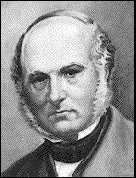
The uniform postal rate was established on January 10, 1840. At that time, the British Treasury held a competition to determine the means of postal prepayment. The winning design was a small adhesive paper which could be attached to the letter before mailing.
By May 1, 1840, the penny black and two-penny blue stamps were available at many British post offices but were not a legal means of postage prepayment until May 6, 1840.
Hill's ideas were
shown to be right. The public immediately accepted postage stamps,
and postal revenues soared. Soon the rest of the world followed
suit and postage stamps were accepted everywhere.
John Nicholas Luff
(November 16, 1860 – August 23, 1938) New York City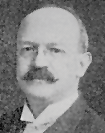
Luff was one of the greatest philatelists of all time. From the 1890s until his death, he was considered the most outstanding philatelic expert in the United States. He was among the first philatelists to use scientific methods in his research, building a large reference collection of genuine stamps and their forgeries to assist him.
Luff became seriously interested in philately in 1890, the year he joined the Pacific Philatelic Society in San Francisco, whose membership comprised some of the leading collectors in the United States. In 1893 he moved to New York City to become a stamp dealer, and in 1894 he joined Scott Stamp & Coin Co., one of the world's largest stamp businesses.
He headed the approval department, edited the American Journal of Philately (2nd series), co-edited the Scott Standard Postage Stamp Catalogue, and wrote the Scott stamp auction catalogs. In the process he established himself as a leading expertiser of the stamps of a large number of countries. In 1903 he became president of Scott, but left in 1905 to join Stanley Gibbons, Inc. He soon returned to Scott, remaining with the firm for the rest of his life.
From the 1890s until the 1930s, Luff was one of the country's leading philatelic writers. Most of his papers appeared in the The American Journal of Philately (2nd series) and Mekeel's Weekly Stamp News. In 1899 he wrote a popular book about stamp collecting, What Philately Teaches. It was revised and reprinted in 1911 and 1915. He also wrote A Reference List of the Stamps of Panama (1905). Luff compiled a special issue of Mekeel's Weekly Stamp News (Vol. 16, No. 4, 25 Jan. 1902) on the stamps of Hawaii. Some of those articles were reprinted as Mekeel's Handbook No. 10, Postage Stamps of the Hawaiian Islands (1916).
Luff's greatest work was his The Postage Stamps of the United States (1902), which still remains a major reference work for students of U.S. stamps. It was reprinted in 1937, with the section on U.S. Postmaster Provisionals revised and expanded by Hugh M. Clark. It was reprinted serially in Weekly Philatelic Gossip from November 8, 1941 and May 8, 1943. This version was reprinted in book form in 1981 by Quarterman Publications.
Luff built an important U.S. collection, which won a gold medal at the international philatelic exhibition in Paris in 1900. His other collections included Great Britain and colonies (especially in the Pacific area), Hawaii, Japan, China, Shanghai and the other Treaty Ports. In addition to building these collections, he formed an enormous and celebrated reference collection which he used to support his expertizing work while at Scott Stamp & Coin Co. When Luff left Scott in 1905, he sold it to them. In 1946, when Hugh Clark sold Scott Publications, he gave the reference collection to the Philatelic Foundation where most of it still resides.
Luff was president of the Philatelic Society, New York, a rival to the older National Philatelical Society. The two clubs decided to establish a facility at which both clubs could each have offices, libraries, and meeting rooms. Luff joined others in establishing the Collectors Club in 1896 to fulfill these purposes. By the early 20th Century, both the NPS and PSNY had dissolved, ceding their property and libraries to the CCNY.
Luff was its president in 1906-1907 and again in 1922-1925, and was a long-time governor. At his death, he was its Honorary Life Governor. Luff was a judge at the international philatelic exhibitions in London (1923) and New York (1926). He was among the organizers and directors of the 1913, 1926 and 1936 (TIPEX) international exhibitions in New York City.
A long-time member of the APS, Luff was its official expert for many years and its president from 1907-1909. In his honor, the APS named its most prestigious award the Luff Award. He was one of the original group of philatelists who signed the Roll of Distinguished Philatelists in 1921.
Return to Top
John Walter Scott
(November 2, 1845 – January 4, 1919) New York City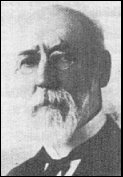
Scott was called “The Father of American Philately” in his lifetime. His first interest in stamp dealing began around 1860 in his native London. It continued in 1863 when he came to New York City. In 1865 he went to California seeking gold but had no success. He returned to New York City in 1867 and resumed his stamp business.
During the next two decades he became America's leading stamp dealer. In 1868, he began publishing the American Journal of Philately, the first important stamp journal in the U.S. That same year he helped support the first U.S. stamp club, the New York Philatelic Society (the second in the world).
From June 1867 to August 1868, Scott issued fifteen monthly one-page price lists. In September 1868, he issued his first catalog: A Descriptive Catalogue of America and Foreign Postage Stamps, Issued from 1840 to Date. This was the first "Scott Catalog", although Scott counted his first fifteen one-page lists and called the September 1868 issue as his "Sixteenth Edition". Scott's Catalog soon became the most important catalog in the United States.
On May 28, 1870, in New York City, Scott organized the first stamp auction ever held. Two years later he opened a branch in London and organized his fifth auction there. The sale, held March 18, 1872, was the first stamp auction held in Europe. In 1882, for his 42nd sale, he sold (for ten cents) a photographic plate of some of the most valuable stamps in the sale. It was the first time an auction catalog contained photographic illustrations.
In December 1885 Scott sold his name, his catalog and his stock to the Calman brothers, who renamed it the Scott Stamp and Coin Company. Scott remained a minority partner in the business, and continued to edit the catalogs and new journal, The American Journal of Philately (Second Series) until 1889. At that time he sold his interest to the brothers and re-entered the stamp business as J.W. Scott and Co., Ltd.
The Calman brothers sued Scott for using the name “Scott,” and after a celebrated legal battle, the New York Superior Court ruled that he had a legal right to use his own name in his business. Scott quickly rebuilt his reputation as a leading stamp dealer and auctioneer. He published and edited the important journal, The Metropolitan Philatelist, from 1890 to 1915.
On September 25, 1895, Scott issued his first J.W. Scott & Co., Ltd. Weekly News Letter, a folio-sized single-sheet described as "a private and confidential communication to the 100 leading amateurs of America." This first philatelic "insider newsletter" continued until May 1, 1897.
Scott also issued during 1897 a more widely distributed weekly, John W. Scott's Junior Weekly Letter, later called John W. Scott's Weekly Bulletin.
Scott was an organizer of the first important philatelic exhibition in the U.S. This took place in 1889 at the Eden Musée in New York City; Scott wrote the catalog and was the major exhibitor. He was an active supporter of stamp clubs in Brooklyn, Manhattan and Staten Island. Scott permanently retired as a stamp dealer in 1917, after seeing his business become the most successful in the U.S. He held 120 stamp auctions, including the first one held anywhere, the first auction catalog with illustrations, and the first auction to sell a stamp at above $1000.
He was a founding member of the Collectors Club of New York (1896), serving in many positions, including president in 1910. He catalogued its philatelic library (Catalogue of the Philatelic Library of the Collectors Club (1917)). He was also a member of the American Philatelic Association (now the APS), holding many positions, including Trustee. He was the APS President (1917-1919) when he died.
In an 1890 poll by The Philatelist (NY) (Vol. 2, No. 4, June 16, 1890), Scott was named “The most prominent philatelist,” winning over John K. Tiffany in a “glorious victory for the ‘Great and only Scott’.”
Return to Top
Thomas Keay Tapling
(October 30, 1855 – April 11, 1891) England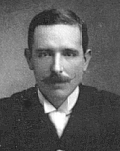
Tapling was one of the first great collectors, beginning as a schoolboy in 1865 and continuing with increasing enthusiasm until his death at age 36 from pleurisy. During the 1870s and 80s he purchased many major collections formed by pioneer philatelists. By 1887, Tapling's collection was unsurpassed except by the legendary Ferrary collection.
In 1871, Tapling joined the Philatelic Society, London (organized in 1869 and today the Royal Philatelic Society London), serving as vice-president from 1871 to 1881. He presented papers and wrote articles on his philatelic discoveries.
Tapling bequeathed
his collection to the British Museum. Today “The Tapling Collection”
resides in the Philatelic Section of the British Library. He was
named a "Father of Philately" on the Roll of Distinguished
Philatelists.
Return to Top
John Kerr Tiffany
(February 9, 1842 – March 3, 1897) St. Louis, Missouri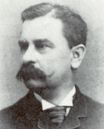
Tiffany was America's most prominent philatelist of the 19th century. He began collecting as a student in France in the late 1850s, continuing for the rest of his life. In the 1860s he decided to begin collecting “every printed matter connected to the hobby of philately,” and by the 1870s he had built an incomparable philatelic library.
In 1874 Tiffany published The Philatelical Library: A Catalogue of Stamp Publications, a listing of the known philatelic works, nearly all of which were in his library. He wrote other articles on, and catalogs of, his philatelic library during the next two decades. In 1889 he wrote Part 1 of The Stamp Collector's Library Companion, and in 1890, an Addenda.
At his death, Tiffany's library was the largest and most complete ever formed. James L. Lindsay, the Earl of Crawford, acquired it intact. On his death, Lindsay's library went to the British Museum (now located in the Philatelic Section of the British Library).
When the American Philatelic Association (now the APS) was organized in 1886, Tiffany was elected president and re-elected for the next ten years until he decided not to run again. He was an ardent collector, building important collections of U.S., British North America and Afghanistan, among others. In 1894 he wrote a seminal monograph, “A St. Louis Symposium,” setting out the correct plating of the St. Louis Postmaster Provisionals (the “Bears”) based on the limited material available. His analysis was verified by subsequent finds of the Bear stamps.
Tiffany wrote the first comprehensive book on the stamps of the United States. It was first published in French by the Belgian dealer, J.-B. Moens: Les Timbres des Etats-Unis d'Amerique (in three parts, 1883). He subsequently revised and expanded it, and it was published in 1887 as History of the Postage Stamps of the United States of America.
In an 1890 poll
taken by The Philatelist (NY) (Vol. 2, No. 4, June 16,
1890), Tiffany was named the second “most prominent philatelist”
- second only to the “Great and only Scott” (J.W.
Scott). In 1921, when the Roll of Distinguished Philatelists
was begun, Tiffany was named as one of the “Fathers of Philately.”
Return to Top
James Ludovic Lindsay (26th Earl of Crawford, K.T.)
(July 28, 1847 – January 31, 1913) England, Scotland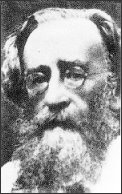
Lindsay is one of the world's most celebrated philatelists. He is usually known by his title, the Earl of Crawford, or Lord Crawford. Although he did not begin stamp collecting until his early 50s, in a short time he had built many outstanding collections, and amassed the greatest philatelic library of his time.
Among Lord Crawford's stamp collections, the most notable were his Great Britain and United States collections. His Great Britain contained not only the issued stamps, but also important collateral material about their design and printing. His United States collection contained an unmatched holding of proofs, essays, engravers' designs and other material that had come from the archives of the private security printers and the U.S. Government. Included was the unique set of full sheets of plate proofs of U.S. postage stamps issued from 1857 to 1893.
Crawford's write-up and display of his stamp collections broke new ground. He included collateral material which he integrated into his exhibits, described in detail in his own hand. Crawford's contemporaries acknowledged that he had set the trend for future philatelic exhibitions.
The Earl joined the Philatelic Society, London (now the Royal Philatelic Society London) in 1900, was vice-president (1902-1910) and president (1910-1913). He was a founder in 1907 of the Philatelic Literature Society whose membership comprised the most advanced philatelic bibliophiles in the world.
Even before he began collecting stamps, Crawford was already a noted collector and bibliophile. The family library, “Bibliotheca Lindesiana,” was started by his father and covered many areas of science, music and literature. It was world famous because of the many detailed bibliographies of its contents. It was natural that philatelic literature would be added to “Bibliotheca Lindesiana.”
Almost immediately after he became a stamp collector in 1898, Lord Crawford set about forming an important philatelic library. To that end he acquired several large philatelic libraries, including the world famous one formed by John K. Tiffany. By 1909 Crawford's library was the greatest in existence. He commissioned Edward D. Bacon to catalog its contents. The resulting book is even today the seminal bibliography of the literature of the first half-century of philately (1861-1910).
Bacon's catalog was initially published as Bibliotheca Lindesiana, Vol VII: A Bibliography of the Writings General, Special and Periodical Forming the Literature of Philately (1911). There were 200 copies distributed to the world's leading libraries and bibliophiles. Crawford gave the printing rights to the Philatelic Literature Society, and Bacon's book was republished with the title, The Catalogue of the Philatelic Library of the Earl of Crawford, K.T. (1911). Three hundred copies were printed, 100 for the members of the PLS, and 200 for sale.
Crawford bequeathed his philatelic library to the British Museum; it now resides in the Philatelic Section of the British Library. In 1991, the British Library reprinted the original 1911 book, the 1926 Supplement and the 1938 Addenda under the title, Catalogue of the Crawford Library of Philatelic Literature at the British Library. For this reprint, the Library used Bacon's personal copy, which contained his manuscript additions and corrections, and the Shelfmarks used by the British Library cataloguers.
In Lord Crawford's honor, the Royal Philatelic Society London established the Crawford Medal in 1914. It is awarded annually for “the most valuable and original contribution to the study and knowledge of philately published in book form during the two years preceding the award.” In 1921, when the Roll of Distinguished Philatelists was begun, his name was included as one of the “Fathers of Philately."
Return to Top
Philip Mathias Wolsieffer
(May 28, 1857 – October 20, 1934) Chicago, Philadelphia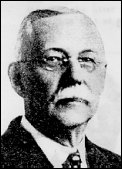
Wolsieffer was an active philatelist, dealer and auctioneer from 1872 until his death. He began his philatelic career in Philadelphia, but moved to Chicago in the mid-1880s. He held his first auction on January 30, 1897. He held 133 more auctions in Chicago before moving back to Philadelphia in 1914 to manage the Philadelphia Stamp Co. He shortly became its owner, changing its name to P.M. Wolsieffer in 1923. He continued to hold stamp auctions until 1933, for a total of 341 sales.
“P.M.” was founding member No. 2 of the Chicago Philatelic Society, formed in 1886. He was its first vice-president, and later president. Wolsieffer served CPS in many categories for thirty years. It later honored him as Life Member No. 1.
Wolsieffer invented a stock page and advertised himself as "the inventor of the approval card." He was a charter member of the American Philatelic Association (now the APS), and served it in many positions, including president in 1924–25.
Return to Top
Charles Esterly Severn
(July 5, 1872 – December 14, 1929) Chicago
Severn was a highly successful and widely acclaimed stamp editor. Most of his philatelic career took place with Mekeel's Weekly Stamp News, first published by Charles H. Mekeel in 1891. Severn began his connection with the paper in 1894 as its Chicago correspondent. At that time the paper was owned and operated by Charles Mekeel's brother, I.A. Mekeel. In 1898, I.A. invited Severn to become the editor and made him a part-owner. Severn remained the editor of Mekeel's for the rest of his life. The corporation bought Redfield's Weekly, one of its rivals, to obtain its superior printing facilities for Mekeel's.
In 1898, the Boston correspondent for Mekeel's, Willard O. Wylie, was invited to join the corporation, sharing the editing chores. From then on, the professional lives of Severn and Wylie were intertwined. Shortly thereafter Mekeel's bought another competitor, the widely read Weekly Philatelic Era, run by W.W. Jewett. Wylie was made the editor of the Era and it continued successfully. When I.A. Mekeel died in 1913, the paper was offered for sale, and in 1915, the Severn-Wylie-Jewett Corporation bought it. Severn, president of the corporation, continued as editor, columnist and feature writer. During his long tenure, Mekeel's was the weekly philatelic journal of record. Under Severn's leadership, a series of important philatelic monographs of various subjects was published.
Severn had been
a member of the Chicago Philatelic Society since 1887, and held
many posts. He was named an honorary Life Director in 1912. After
his death, his wife, Eveleen
Severn, who had long been his collaborator, succeeded him as
president of Severn-Wylie-Jewett Co. Charles Severn was one of the
original group of philatelists who signed the Roll of Distinguished
Philatelists in 1921.
Return to Top
Frederick John Melville
(February 22, 1882 – January 12, 1940) England
Melville was one of the most prolific philatelic writers and editors of all time. He wrote his first monograph in 1897 and began his editing in 1899, continuing for the rest of his life.
Melville wrote books on every topic and country. His The ABC of Stamp Collecting, the first of his many “how to collect” books, appeared in 1903 with English and American editions. It was re-written in 1922 and had a Spanish edition in 1926. The Postage Stamps of Great Britain, published in 1904, was the first of his “country books.” He published seven others on British stamps between 1904 and 1930. One of his favorite countries was the United States. His The Postage Stamps of the United States of America, published in 1905, was the first of seven on U.S. stamps published between then and 1925.
Melville wrote well over 100 books (see A “Melville” Bibliography, L.N. and M Williams (1941)) and he is listed over 100 times in the catalogs of the major U.S. philatelic libraries -- the American Philatelic Research Library, the Collectors Club library and the Smithsonian Institution Libraries. Melville's last book, Modern Stamp Collecting, was released on May 6, 1940 the centenary of the first postage stamp.
In 1899, young Melville applied for membership in the Philatelic Society, London (now the Royal Philatelic Society London) but he was rejected because it was open only to “all persons not under 18 years of age.” He decided to found a new society open to young collectors and he began the Junior Philatelic Society on November 11, 1899. Its goal was “to take first rank among societies for juniors as the premier society [the Philatelic Society, London] has already done amongst those advanced collectors.” He served as its president until his death. (The Junior Philatelic Society was renamed the National Philatelic Society in 1965 and celebrated its centenary in 1999.)
Melville began his editing career in 1899. His first important editorship was of The Stamp Lover, which he founded in 1908 as the official journal of the Junior Philatelic Society. Except for a few issues in 1915, he remained its editor until his death. Melville also edited other major philatelic journals. These included Postage Stamp (1909-1925), Stamp Collector's Fortnightly (1926-1939) and British Philatelist (1932-1939).
Under the auspices of the Junior Philatelic Society, Melville organized the Imperial Stamp Exhibition in 1908, the War Stamps Exhibition in 1915 and the first international airpost exhibition, APEX, in 1934. He helped organize and edited the catalogs for the international philatelic exhibitions held in London in 1912 and 1923. In the 1912 “Jubilee” exhibition, he introduced a design for the “Ideal Stamp.”
Melville was a founder of the Philatelic Literature Society (1907-1918) whose members were the leading philatelic bibliophiles in the world. He built an outstanding philatelic library; it was the best in Great Britain at his death. In 1940, the U.S Library of Congress purchased Melville's philatelic library, which included his working notes and files. It was not delivered until 1947. Most of his library is now part of the large philatelic collection in the Library of Congress, but a large quantity of duplicates and miscellany was transferred to the Smithsonian Institution Libraries. That part now resides at the National Postal Museum branch.
Melville was one
of the original group of philatelists who signed the Roll of Distinguished
Philatelists in 1921.
Return to Top
Charles Lathrop Pack
(May 7, 1857 – June 14, 1937) New Jersey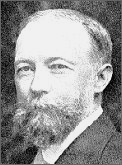
Pack was one of the country's most distinguished philatelists. He built outstanding specialized collections based on detailed research on stamp issues and their printing. Most notable was his collection of Victoria, which led to his highly acclaimed book Victoria: the Half-length Portraits and the Twopence Queen Enthroned (1923).
For this book he received the 1923 Crawford Medal from the Royal Philatelic Society London, and the 1926 Lindenberg Medal from the Berliner Philatelisten-Klub. In both instances, he was the first American to receive these awards. He also received the first Award of Merit given by the Collectors Club of New York.
Pack had many other
world-famous collections, most notably New South Wales, New Zealand,
Canada, Cape of Good Hope, Spain, Argentina, Uruguay and Brazil.
The last was especially notable for his plating studies of the early
issues. Pack received many honors from philatelic societies throughout
the world, and was one of the original group of philatelists who
signed the Roll of Distinguished Philatelists in 1921.
Return to Top
Charles James Phillips
(May 15, 1863 – June 2, 1940) London, New York City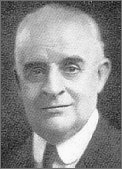
Phillips began his distinguished philatelic career in London as head of the most famous stamp firm of its time, and ended it in New York as a specialist dealer and chronicler of philatelic history. He purchased the world-famous Stanley Gibbons & Co. in 1890 and remained its head until 1922 when he sold it and moved to the United States.
While at Gibbons, he saw to the building and selling of all the great collections of that time. He wrote Fifty Years of Philately: The History of Stanley Gibbons (1906). He edited and wrote in Gibbon's house journals, The Monthly Journal, and The Stamp Advertiser and Auction Record. Phillips also wrote articles in Gibbons Stamp Weekly, especially on collections and rarities he had sold or helped build.
In 1922 Phillips emigrated to the United States, settling in New York City, where he became a well-known rarities stamp dealer. He wrote extensively in Stamps and in his own journal, Philatelic Classics, about his friendships and relationships with the great collectors. His books include The Duveen Collection of Rare Old Postage Stamps: a Brief Description of Some of the Rarities of this Famous Collection (1922), and Denmark 1851-1899: Detailed, Descriptive, Priced Catalogue of the Early Issues, Together with Lists and Prices of the Numeral Cancellations (1925). He also wrote a popular book, Stamp Collecting: The King of Hobbies and the Hobby of Kings (1936).
Phillips was retained by the estate of Arthur Hind to advise it on the sale of Hind's world famous collection of rarities and classic stamps. It was in 1933, in the midst of the Great Depression. Phillips and Hind's philatelic secretary, William C. Kennett Jr., arranged and sold at auction Hind's U.S. and Confederate States stamps, obtaining prices that were higher than most observers believed possible under the circumstances.
He was one of the original group of philatelists who signed the Roll of Distinguished Philatelists in 1921. In 1939, the Collectors Club of New York presented him its Award of Merit for his long service to it and to all philately, naming him both an “International Stamp Dealer” and “A World Famous Philatelist.”
Return to TopEdward Spring Knapp
(September 10, 1879 – April 5, 1940) New York City
Knapp was a prominent student of U.S. and Confederate philately and postal history. He built an outstanding collection of covers, most notable of which was his unsurpassed collection of hotel covers. These won many awards including at the International Philatelic Exhibitions of 1926 and 1936. During the 1930s, he wrote a column in Stamps on hotel covers, and published a monograph, Pony Express, in 1936.
Knapp was a specialist collector of Confederate stamps, and worked with Stanley B. Ashbrook on various plating studies, notably the 5¢ New Orleans Confederate Provisional and the 10¢ Frameline.
His collection of Confederate States was sold privately. The rest of his collection was turned over to Philatelic Research Laboratories, Inc. (Y. Souren) and sold in three famous auctions at the Parke-Bernet Galleries in 1941-1942. Before the sales the entire collection was photographed. A set of the photos, illustrating 7822 subjects in 186 volumes arranged by Y. Souren and H.W. Carhart, resides in the Collectors Club of New York library.
Philatelic Research Laboratories, Inc. also offered smaller packages of photos for sale. For example, they prepared a ten-volume set of photos showing all the major pieces, and many album pages not illustrated in the three auction catalogs. A set was given to the Smithsonian Institution and is now at the National Postal Museum. The book, Philatelic Iconography: Being Illustrations of Rare and Unusual Stamps, Covers, and Cancellations Included in the Edward S. Knapp Collections (1941) contains the illustration plates from the three auction catalogs, but not the text.Return to Top
Beverly Sedgwick King
(December 22 1876 – March 4, 1935) New York City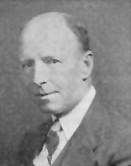
King was a noted expert and collector of 20th century U.S. stamps and revenues. He and Max Johl co-authored, The United States Postage Stamps of the Twentieth Century (Vol. 1, 1932; Vol. 2, 1934). This important work had run serially in the Collectors Club Philatelist. King later returned to this subject, writing a few articles, but died in an auto accident before he could continue.
“Bev” was active in the Collectors Club of New York, serving on their Board of Governors, and as president in 1933. He was also active in the APS, serving as editor for the Revenue Unit of the society.
Return to Top
Hugh McLellan Southgate
(September 3, 1871 – October 23, 1940) Washington, D.C.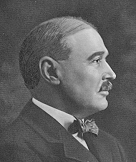
Southgate was an important collector and student of the Bureau Issues of the United States. He was a founder and first president of the Philatelic Plate Number Association (1926-1928). He was also the first president and chairman of the board (1930-1940) of its successor, the Bureau Issues Association (now the United States Stamp Society).
“H.M.S.”
was among the first researchers to make extensive use of the archival
material held by the Bureau of Engraving and Printing. He was prominent
in the philatelic activities of the Washington, DC area and in the
APS.
Ralph Andrews Barry
(November 30, 1883 – December 10, 1939) New York City
Barry was known as the “Dean of American Philatelic Writers.” He was stamp and coin editor of the New York Herald Tribune from 1933 until his death. In this influential position he promoted the pleasures and techniques of stamp collecting to both the non-philatelic and philatelic public.
Barry wrote special editions for the many important stamp shows held in New York City in the 1930s. He also gave numerous radio talks promoting stamp collecting and the philatelic events of the period. Barry wrote A Glossary for the Stamp Collector (1936), which was revised and reprinted in 1938 and in 1940.
In his honor, the Ralph A. Barry Award was established in 1942 and given to the editor of the best newspaper stamp column.
Return to Top



